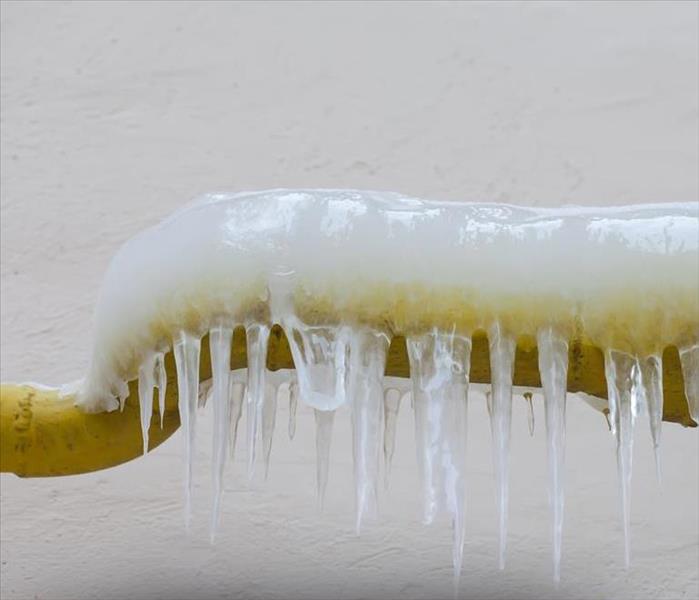How To Deal With Frozen Pipes
3/15/2019 (Permalink)
Winter weather can cause a lot of damage to your home. Prepping for winter means making sure there are no weak areas in your roof, around your windows or in your foundation to let cold air or water in. Other hazards to look out for are frozen pipes. While the best protection is prevention, there are things you can do to salvage pipes before they wreak havoc on your home.
Locating Problems
A pipe freeze will often show up as a faucet that produces little to no water flow. If that happens, start by inspecting pipes in the following areas:
- Near exterior walls
- In the attic or basement
- In crawlspaces
If there is frozen water in a pipe, it may have already expanded enough to crack. If that is the case, turn off the water main and call a plumber. Warming the pipe up before it's fixed may result in water damage that can only be resolved by water restoration specialists.
Unfreezing Pipes
Sometimes, frozen pipes won't show any signs of stress or breakage. When this happens, you can fix the problem by simply warming the pipe. Keeping faucets open to keep warm water moving through the pipes can accomplish this goal. You can also use a hair dryer to warm up pipes or, if the pipe is metal, a heat gun. Directing warm air from your HVAC unit into the walls can also unfreeze the water in the pipes.
Preventing Freezes
To prevent a pipe freeze, you want to make sure the pipes and the air around them stay warm. Insulate pipes that are particularly vulnerable. Keep the heater on in your home, and circulate the air so that it reaches the pipes. Opening cabinets and closet doors can help facilitate this circulation.
Frozen pipes can cause damage to your home in Geneva, IL, but dealing with this issue is fairly simple. By warming pipes and keeping them that way, you can prevent a lot of water damage.




 24/7 Emergency Service
24/7 Emergency Service
